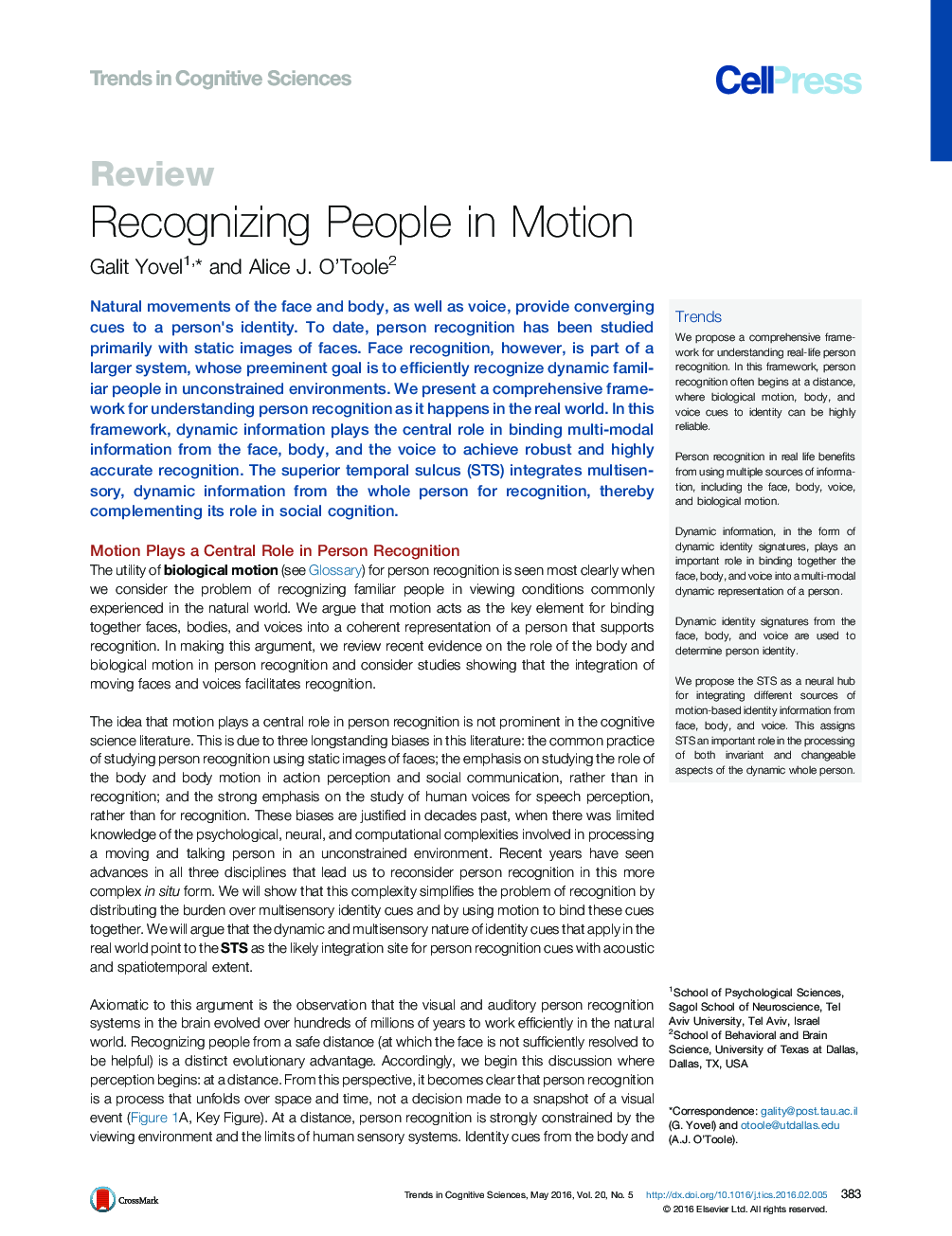| Article ID | Journal | Published Year | Pages | File Type |
|---|---|---|---|---|
| 141346 | Trends in Cognitive Sciences | 2016 | 13 Pages |
Natural movements of the face and body, as well as voice, provide converging cues to a person's identity. To date, person recognition has been studied primarily with static images of faces. Face recognition, however, is part of a larger system, whose preeminent goal is to efficiently recognize dynamic familiar people in unconstrained environments. We present a comprehensive framework for understanding person recognition as it happens in the real world. In this framework, dynamic information plays the central role in binding multi-modal information from the face, body, and the voice to achieve robust and highly accurate recognition. The superior temporal sulcus (STS) integrates multisensory, dynamic information from the whole person for recognition, thereby complementing its role in social cognition.
TrendsWe propose a comprehensive framework for understanding real-life person recognition. In this framework, person recognition often begins at a distance, where biological motion, body, and voice cues to identity can be highly reliable.Person recognition in real life benefits from using multiple sources of information, including the face, body, voice, and biological motion.Dynamic information, in the form of dynamic identity signatures, plays an important role in binding together the face, body, and voice into a multi-modal dynamic representation of a person.Dynamic identity signatures from the face, body, and voice are used to determine person identity.We propose the STS as a neural hub for integrating different sources of motion-based identity information from face, body, and voice. This assigns STS an important role in the processing of both invariant and changeable aspects of the dynamic whole person.
